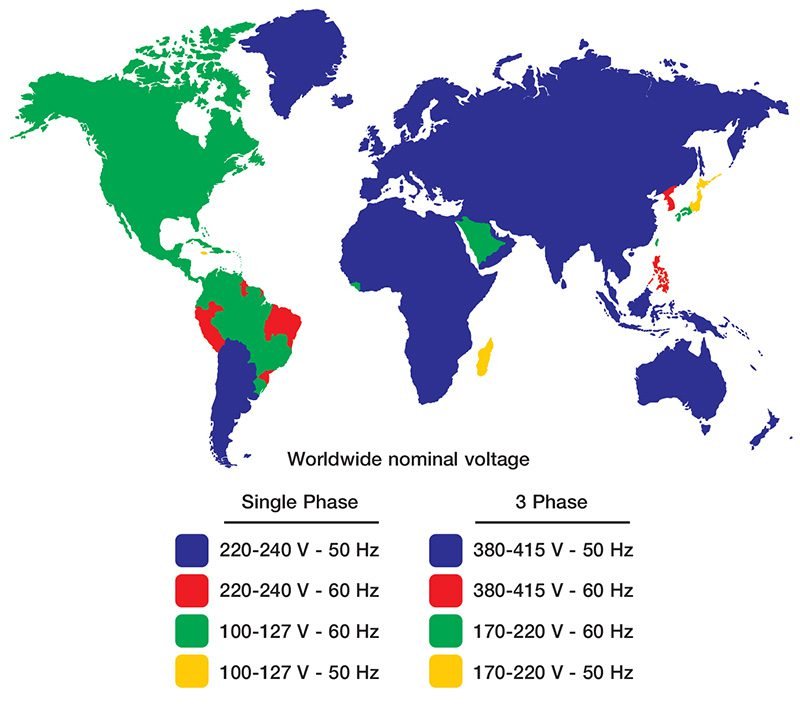Exist two voltage supply bands to domestic residences: 100 to 127 V and 200 to 240 V. Differences between these voltage levels in rms are today’s subject.
Origins
Why these are the chosen voltage bands? In late 19th century, in USA, Thomas Edison’s company General Electric, provided continuous (DC) electrical energy with 110 V. However, Nikola Tesla introduced three-phase alternate current (AC) in 240 V, which is much more efficient to long distance transmission. This graphic shows that AC is cheaper for transmission until 800 km or 50 km of submarine line. To greater distances, DC is cheaper because only needs two conductor cables and other factors that will be explained in a future post.

Voltage AC has been reduced to 110 V for security reasons and already have many applications with this voltage level. While in Europe, was adopted 220 V band to save copper in wiring. The voltage measured in plug with a multimeter is wave’s rms value.
Energy consumption
Voltage does not influence in a device’s energy consumption. What determines consumption is power. Click in the following link to know power basic concepts.
Devices for 200-240 V need less current than ones of 100-127 V. Using this formula, can calculate quantity of current consumed by a load.
P=V\cdot i
Different voltage levels need to use wires with different thickness. This is power dissipation formula.
P=R\cdot i^{2}
Therefore, wire for 100-127 V must be thicker than to 200-240 V. Or cables will heat too much. In home appliances which convert electric energy in heat, 200-240 V band is more efficient. Because use less current and wire’s thickness is smaller.
Who uses which voltage value?
This map shows world regions which use determined voltage levels and frequency. Standard voltage value may vary between countries of the same color, for example, Japan uses 100 V, while Canada uses 120 V, most part of Brazil uses 127 V, etc. Some countries use both voltage bands, depending on application.

Security in voltage levels
If you turns on a device for 127 V in a 220 V plug, it will burn due to overvoltage. If the opposite is done, the device won’t work because there is not enough voltage. In this case, it is necessary use a transformer to obtain desired voltage. Some devices are bivolt, can work in both bands.
And if a home appliance made by 110 V was used in 127 V, for example? It will work, devices usually have tolerance close to 10%. But above the tolerance, lifespan will be reduced and can have overheating, specially if are appliances made to generate heat, because it is operating with a voltage bigger than it was designed.




Ótimo post, principalmente para quem está começando e quer entender um pouco mais sobre o assunto. Quanto a história de qual padrão utilizar para na rede de transmissão, AC ou DC eu achei muito interessante, havia assistido um comentário sobre isso.
Obrigado.
Qual documentário você assistiu?